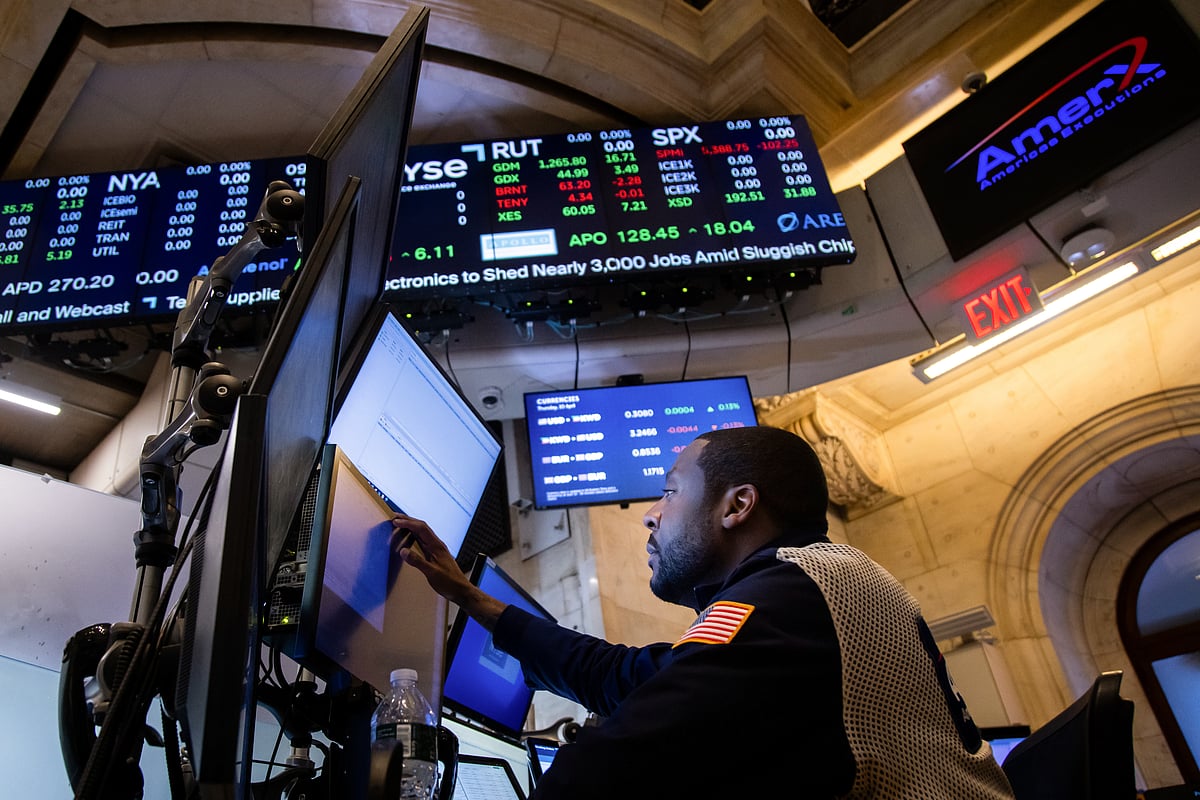Asian markets faced a significant downturn as global trade tensions escalated, causing a ripple effect on stock indices across the region. Following an alarming uptick in US tariffs on Chinese goods, investors reacted with caution, leading to a noticeable decline in major Asian markets. The S&P 500’s steep drop of 3.5% set the stage for this sell-off, as concerns about the future of US-China trade relations grew more pronounced.
Market Reactions to Trade Tensions
The latest developments in trade negotiations have left investors on edge. The US dollar continued its downward trend after experiencing its worst performance since 2022, while the Swiss franc surged to its highest value in a decade. The Japanese yen also gained strength, and gold prices hit a new record, further emphasizing their status as safe-haven assets during times of market uncertainty.
- The S&P 500 dropped 3.5% on Thursday.
- The Swiss franc reaches a decade-high.
- Gold prices continue to soar, reflecting investor caution.
Investor Sentiment Shifts
Just a day after a brief rally following President Donald Trump’s decision to postpone certain tariffs, the mood shifted dramatically. The announcement of a 145% tariff on Chinese imports has overshadowed any optimism surrounding potential trade talks. According to Michael Bailey of FBB Capital Partners, "Investors are beginning to realize that the ongoing US-China trade conflict is likely to escalate rather than resolve anytime soon."
While Trump hinted at a possible agreement, the announcement of increased tariffs painted a bleaker picture. Nicolas Oudin from Gavekal Research noted, "The Trump administration’s strategy has shifted from a broad trade war to a targeted one against China. However, many in China interpret this as a sign of US weakness, which only fuels their resolve."
Market Movements and Currency Fluctuations
Despite the turmoil, some Chinese stocks showed resilience, spurred by speculation that the government would unveil new economic stimulus measures. Upcoming discussions among China’s top leaders in Beijing are anticipated to address these economic strategies. However, US-listed shares of Chinese companies slid after reports emerged that the Trump administration might pursue delisting these stocks from American exchanges.
The currency market mirrored the growing uncertainty, with the dollar declining and the yen appreciating to around 143 per dollar, a level not seen since October. Emerging market currencies saw a slight uptick, with the offshore yuan gaining for the third consecutive day.
Ongoing Volatility and Future Outlook
Market analysts continue to warn that the volatility driven by tariff anxieties is unlikely to dissipate. Nathan Thooft from Manulife Investment Management remarked, "The anxiety surrounding tariffs is very much alive, and we should expect further fluctuations in the market as negotiations continue without resolution."
In commodities, oil prices saw a minor decrease, while gold maintained its upward trajectory. Bitcoin also nudged lower, trading around $79,600.
Here’s a snapshot of the latest market data:
-
Stocks:
- S&P 500 futures fell 1.1%
- Hang Seng futures down 0.5%
- Japan’s Topix decreased 4.7%
- Australia’s S&P/ASX 200 dropped 2.1%
-
Currencies:
- Euro rose 0.7% to $1.1275
- Japanese yen increased 0.9% to 143.22 per dollar
- Offshore yuan climbed 0.1% to 7.2990 per dollar
-
Bonds:
- 10-year Treasury yield up five basis points to 4.48%
- Australia’s 10-year yield increased eight basis points to 4.41%
- Commodities:
- West Texas Intermediate crude slipped 0.5% to $59.78 a barrel
- Spot gold rose 0.6% to $3,193.90 an ounce
With the ongoing trade disputes, market participants are bracing for a potentially turbulent road ahead, as the implications of these tensions continue to unfold.











